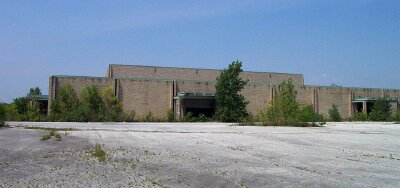Dead Malls
"Dead malls" have recently become a source of interest from contemporary history buffs, urban redesigners, and environmentalists. The current issue of FORTUNE magazine has a piece on the history and future of malls, making special note of the dead-mall phenomenon. They are at once an eyesore, a development opportunity and a little bit of a community's heritage.
Deadmalls.com is a site that documents dead and dying malls, including a feature on the Dixie Square Mall in Harvey, IL, which earned infamy as the site of the indoor car chase scene in the 1980 movie The Blues Brothers (it was closed even back then). You can search for malls by state, access links to urban planning sites, and view pictures of dead malls, some of which are literally returning to nature.

The abandoned Dixie Square Mall
Dead malls speak volumes about a community's changing tastes, demographics and growth patterns. Often, they were anchored by large department stores that fell victim to the likes of Wal-Mart and Target, sinking the entire mall with them. Most important to us, they provide clues to future trends. Malls die for a reason, the most common of which is that consumers simply choose to shop elsewhere.
This weekend, take the time to drive past a dead mall. Try to visualize what it was, and what it could be.













Listen to this article, or subscribe to the full podcast
Bookmark with del.icio.us << Home